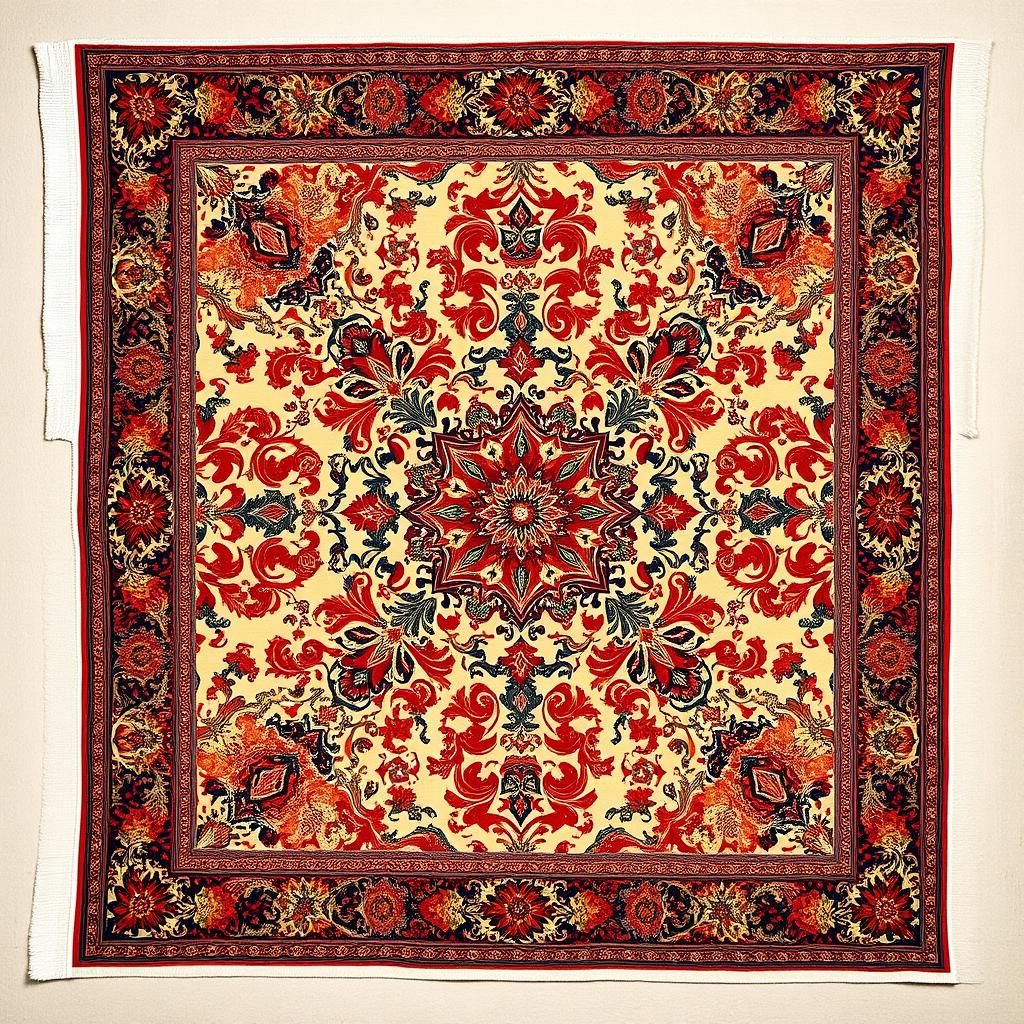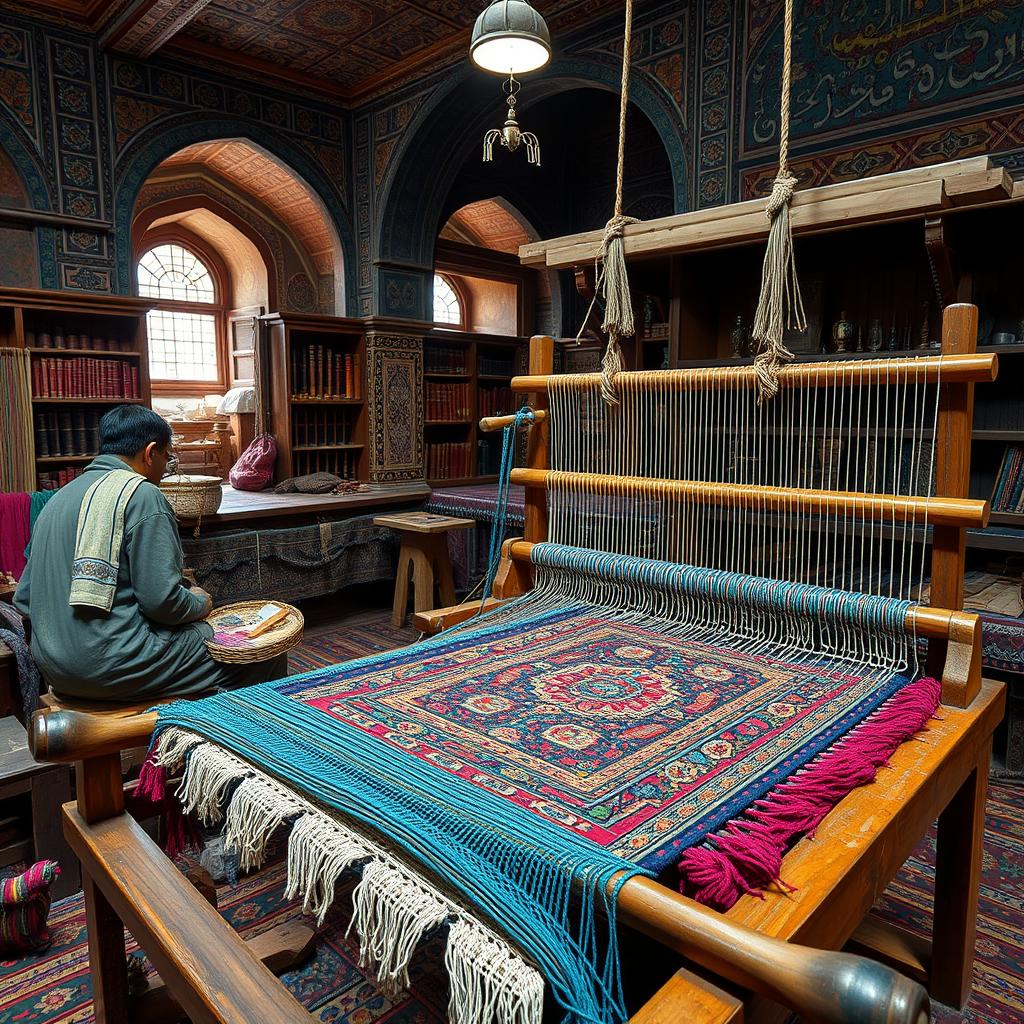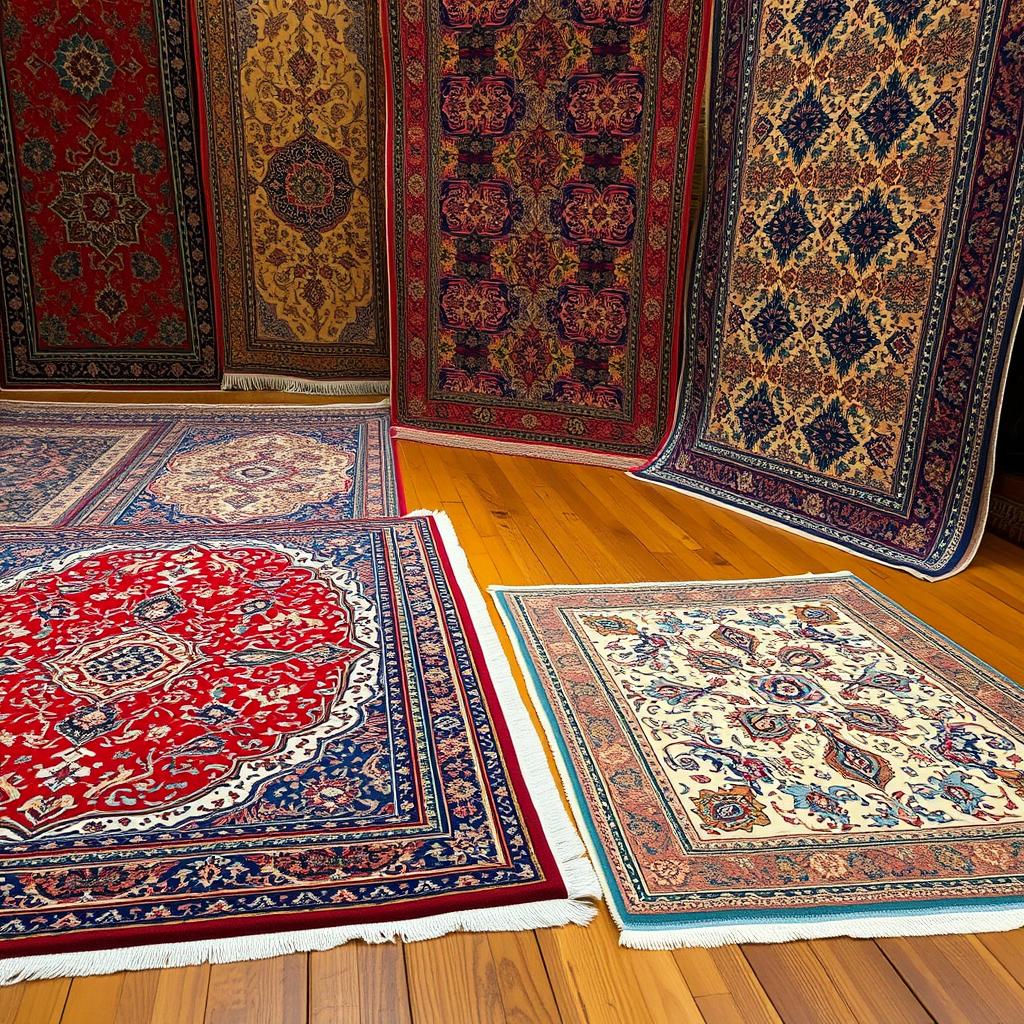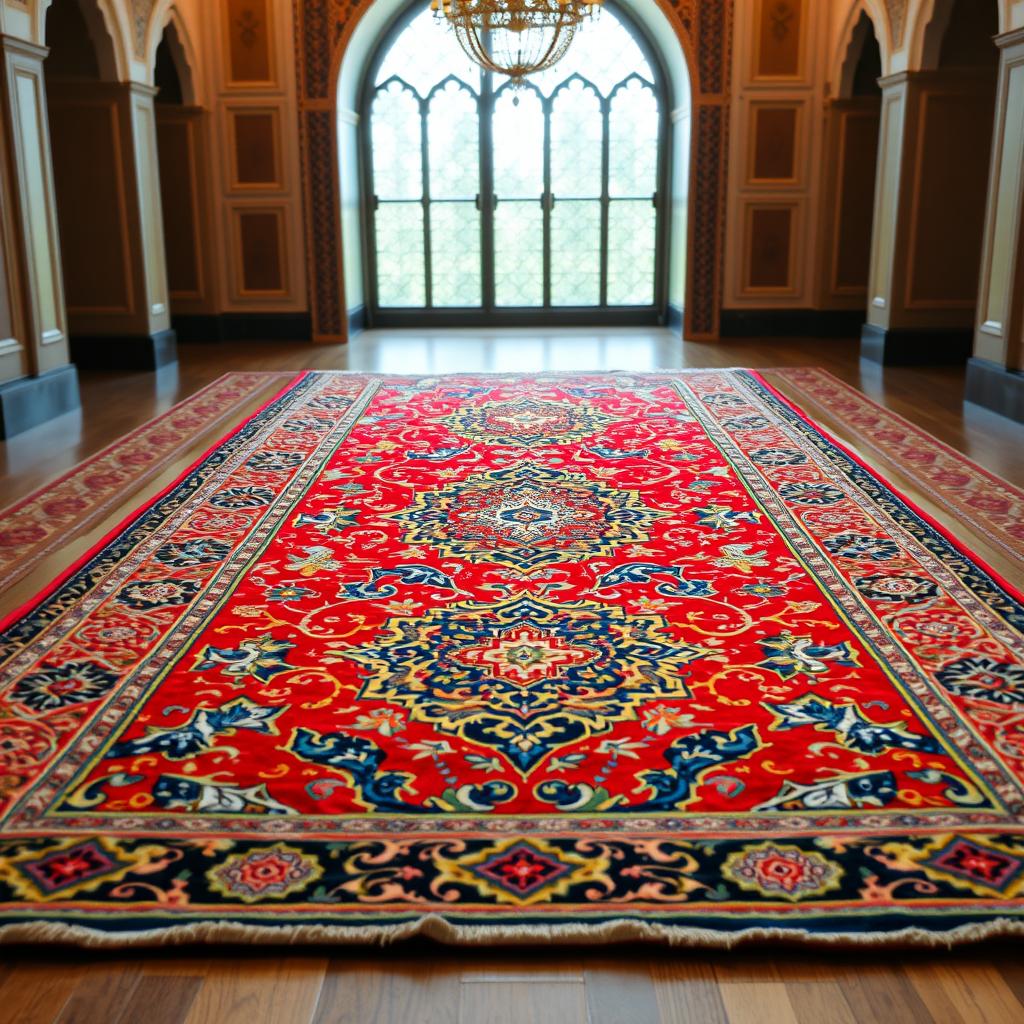Imagine stepping into a world where art, history, and culture come together. This world is created by the skilled hands of Persian weavers. Iranian Persian carpets have been a global treasure for centuries. They tell a story of resilience, creativity, and lasting beauty. But where did this art form start? And how has it changed over time? Let’s explore the origins and history of these stunning carpets.
Click to use Silverigroup personal shopper services
In this journey, we’ll uncover the origins and importance of Iranian Persian carpets. We’ll see how Persia’s carpet-making has become a world-renowned art. Join us as we explore the stories behind these carpets and their lasting impact.
Key Takeaways:
- Explore the ancient beginnings of Persian carpet weaving, tracing its origins to ancient civilizations and archaeological discoveries.
- Discover the traditional Iranian carpet-making regions and their unique contributions to the art form.
- Understand the Golden Age of Persian carpet weaving and the influential role of the Safavid dynasty.
- Delve into the rich symbolism and cultural significance behind the intricate designs and motifs of Persian carpets.
- Gain insight into the global trade and export of these coveted works of art, and their enduring appeal across the world.
Ancient Beginnings: The Birth of Persian Carpet Weaving
The history of Persian carpet weaving goes back to ancient times. It shows a deep history and tradition in these iconic rugs. The discovery of the Pazyryk carpet and ancient Persian texts highlight the roots of this craft.
Click to buy antique rugs from Silverigroup
The Pazyryk Carpet Discovery
The Pazyryk carpet’s discovery is a key moment in Persian carpet history. Found in the Altai Mountains of Siberia, it’s from the 5th century BC. It shows the advanced techniques and designs of ancient times.
Early Evidence in Persian Literature
Persian carpet weaving’s rich heritage is also seen in ancient Persian writings. Poets like Ferdowsi and scholars like al-Bīrūnī wrote about these carpets. Their works highlight the artistry and craftsmanship of these rugs.
Archaeological Findings and Historical Records
Archaeology has also found evidence of ancient carpet weaving in Persia. Excavations have uncovered artifacts and records. These show the long tradition of weaving in the region.
The ancient start of Persian carpet weaving shows the skill and art of weavers. Their work still inspires people worldwide.

Traditional Iranian Carpet-Making Regions and Their Significance
Iran is where the famous Persian carpet was born. It has many areas known for their carpet-making traditions. These traditional iranian carpet designs show the country’s rich culture and the skill passed down through generations.
In the northwest, Tabriz is famous for its carpets. They have detailed floral patterns and vibrant natural dyes. The weavers of Tabriz are experts at creating scenes of history or myths.
The Kerman region, further south, is known for its beautiful carpets. They have a central medallion surrounded by intricate patterns. This shows the weavers’ amazing skills.
- The Kashan region, in central Iran, is famous for its luxurious carpets. They have a deep pile and a mix of colors.
- In the northeastern province of Khorasan, the weavers make carpets with bold designs. They use vibrant colors.
- The Hamadan region, in the west, is known for its dynamic carpets. They are strong and have bold patterns.
Every region in Iran has its own carpet style. This reflects the local culture and nature. The weavers use vibrant natural dyes and special techniques. They create stunning carpets that have amazed people for centuries.
The Golden Age of Persian Carpet Weaving
The Persian carpet industry saw a golden era during the Safavid dynasty’s rule. This time, from the 16th to the 18th century, is known for its stunning persian rug patterns and top-notch silk and wool carpet fibers.
Safavid Dynasty’s Influence
The Safavid rulers supported Persian carpet weaving like never before. They saw its value in culture and economy. This support led to incredible artistry and sophistication in carpet weaving.
Royal Court Workshops
The Safavid dynasty set up royal court workshops for carpet making. Here, skilled weavers and designers worked together. They created amazing carpets for the palace and other important projects.
Evolution of Design Schools
During this time, different design schools emerged. Each had its own style and look. From Tabriz’s detailed patterns to Kashan’s delicate designs, the variety was incredible.
| Design School | Characteristic Features |
|---|---|
| Tabriz | Intricate, detailed patterns with a strong emphasis on symmetry and balanced composition. |
| Kashan | Delicate, intricate floral designs featuring intricate persian rug patterns and the use of silk and wool carpet fibers. |
| Isfahan | Renowned for their vibrant colors, bold geometric designs, and a focus on incorporating religious and cultural motifs. |
The Golden Age of Persian carpet weaving made a lasting impact. It showed the world the beauty of persian rug patterns and the skill of silk and wool carpet fibers. This era still inspires weavers and collectors today.

Origin and History of Iranian Persian Carpets
The origin and history of Iranian Persian carpets go back centuries. They show the deep persia’s carpet-making heritage. These carpets are not just beautiful; they carry a lot of cultural meaning.
The history of Iranian Persian carpets starts in the 5th century BC. The famous Pazyryk Carpet was found in a frozen Scythian tomb in Siberia. It’s made of wool and dyed with natural colors. This carpet shows the skill and artistry of Persian carpet-making from the start.
Over time, the origin and history of Iranian Persian carpets have been linked to Persia’s rich culture. The Persian epic Shahnameh mentions them, and ancient fragments have been found. This proves the long tradition of carpet-making in the area.
The origin and history of Iranian Persian carpets have changed over the years. The Safavid Dynasty was key in this change. They set up royal workshops that made some of the most beautiful carpets in the world.
There are many styles, like the Kashan school’s floral designs and Tabriz’s bold patterns. The origin and history of Iranian Persian carpets show the diversity of Persian art. Each style reflects the unique culture and geography of Persia.
Nomadic Tribal Weavers and Their Unique Traditions
Nomadic tribal weavers are at the heart of Persian carpets’ legacy. They come from Iran’s rich cultural background. For centuries, they’ve made the famous handwoven Persian rugs.
Distinctive Tribal Patterns
Iran has many nomadic tribes, each with its own weaving style. The Qashqai tribe is known for bold geometric designs. The Bakhtiari tribe creates intricate floral patterns. These patterns show the creativity and skill of these weavers.
Seasonal Migration Impact
The nomadic lifestyle affects their carpet-weaving. As they move with their herds, they change their designs and techniques. This connection with nature is seen in the beauty of Persian carpets.
Tools and Techniques
- Traditional looms: Made with great care, these vertical looms help create high-quality Persian rugs.
- Natural dyes: Plants, minerals, and insects give Persian carpets their bright colors. Weavers have mastered natural dyeing for generations.
- Intricate knots: Weavers tie each knot carefully. This makes the rug dense, durable, and beautiful.
The legacy of nomadic tribal weavers shows Iran’s rich culture and artistic spirit. Their traditions, patterns, and techniques still inspire and captivate many.

Materials and Natural Dyes in Persian Carpet Making
The Persian carpets we love today show the deep heritage and skill of Iranian weavers. They use silk and wool carpet fibers to make these carpets.
Silk gives the carpets a shiny look and lasts a long time. The silk threads are carefully spun and woven. This makes the carpets look very elegant. Wool, on the other hand, makes the carpets soft and durable.
The vibrant natural dyes make the Persian carpets stand out. Weavers use natural materials like madder root, indigo, and saffron. These colors create a beautiful palette that moves across the carpets.
For generations, weavers have learned how to dye these colors. Each region in Iran has its own special colors. This shows the deep connection between the carpets and the land.
“The colors of Persian carpets are not just the result of a technical process, but a reflection of the soul and spirit of the weavers who pour their heart and soul into every stitch.”
When you touch a Persian carpet, you feel the art and effort that went into it. From choosing silk and wool carpet fibers to mastering vibrant natural dyes, each carpet is a masterpiece. It shows the lasting beauty of this ancient craft.
Symbolic Meanings and Motifs in Persian Carpet Design
The persian rug patterns in Iranian carpets are more than pretty designs. They carry deep cultural significance from Persian history and traditions. Each part of a Persian carpet tells a story, from religious symbols to nature scenes.
Religious and Cultural Symbols
Persian carpets show motifs and symbols that reflect Persian beliefs. The Tree of Life symbolizes the connection between the spiritual and physical worlds. The Boteh (or Paisley) motif means fertility and the cycle of life.
Geometric Patterns and Their Significance
The intricate persian rug patterns in Persian carpets are full of meaning. Geometric designs like the Medallion or Octagonal Star show the universe’s harmony and order. The Lozenge pattern is linked to protection and good luck.
Flora and Fauna Representations
The natural world inspires Persian carpet designs. Flowers, trees, and animals are common, each with its own meaning. The Cypress Tree symbolizes strength and longevity. The Peacock stands for beauty, pride, and royalty. Understanding the intricate persian rug patterns and motifs deepens our appreciation for Persian carpets. It shows the artistry and cultural richness behind them.
The Global Trade and Export of Persian Carpets
For centuries, the stunning Persian rugs have amazed people everywhere. They symbolize Persia’s carpet-making heritage. The global trade and export of these textiles have greatly influenced Persian carpet-making traditions.
The ancient Achaemenid Empire was one of the first to trade Persian carpets. Their detailed designs and fine craftsmanship drew attention from far-off places. The Silk Road, a network of trade routes, helped spread these carpets worldwide.
The Safavid Dynasty boosted the demand for Persian carpets. Royal workshops in Kashan and Isfahan created pieces that nobles and the Ottoman Empire wanted. This time saw the rise of different design schools, each with its own style.
| Period | Key Developments | Impact on Global Trade |
|---|---|---|
| Achaemenid Empire | Emergence of Persian carpet trade along the Silk Road | Introduction of Persian carpets to distant lands |
| Safavid Dynasty | Establishment of royal workshops, development of design schools | Increased international demand and export of Persian carpets |
| Modern Era | Continued appreciation and global reputation of Persian carpets | Sustained export and widespread availability of handwoven Persian rugs |
Today, the global trade and export of Persian carpets are still strong. Their beauty and skill continue to win hearts around the world. The lasting impact of Persia’s carpet-making heritage shows the artistry and cultural value of these textiles.

Conclusion
The journey through the origin and history of Iranian Persian carpets is fascinating. It shows a rich cultural legacy. From the ancient beginnings of carpet weaving to the golden age under the Safavid dynasty, these carpets have stood the test of time.
Each region in Iran has its own carpet-making traditions and techniques. This diversity makes Persian carpets appealing worldwide. The symbols and intricate designs in these carpets reflect the cultural and religious influences of Iran.
The global trade and export of Persian carpets are growing. This shows the lasting impact of these carpets. Their beauty and appeal remind us of the rich Iranian heritage. They inspire awe and appreciation from art lovers and collectors everywhere.
FAQ: Origin and history of Iranian Persian carpets
What is the origin and history of Iranian Persian carpets?
Iranian Persian carpets have a long history, dating back thousands of years. The art of carpet weaving in Persia (modern-day Iran) has grown over centuries. Early carpet-making evidence is found in archaeological discoveries and historical records. Persian carpets are cultural treasures. They are known for their intricate designs, vibrant colors, and exceptional craftsmanship.
What are the ancient beginnings of Persian carpet weaving?
The earliest known evidence of Persian carpet weaving is from the 5th century BC. The Pazyryk carpet, a well-preserved, knotted pile carpet, was found in a Scythian burial mound in Siberia. Ancient Persian literature and archaeological findings also show a long tradition of this craft.
What are the traditional Iranian carpet-making regions and their significance?
Iran has several carpet-making regions, each with its own style and techniques. Fars, Khorasan, Tabriz, and Kerman are some of the most famous. These regions have a deep cultural heritage, adding to the diversity and richness of Iranian carpet designs.
What was the Golden Age of Persian carpet weaving?
The Golden Age of Persian carpet weaving was during the Safavid Dynasty (1501-1722). This period saw the rise of royal court workshops and design schools. Persian carpets reached new heights of artistry, using silk and wool for intricate patterns.
Who were the nomadic tribal weavers and how did they contribute to Persian carpet-making traditions?
Nomadic tribal weavers were key in Persian carpet traditions. These skilled artisans, often women, created unique tribal patterns. Their designs were influenced by their migrations and traditional tools.
Their contributions have enriched Persian carpet heritage.
What materials and natural dyes were used in Persian carpet making?
Persian carpet makers used natural materials like silk and wool. They also used vibrant natural dyes. These natural resources have been crucial in Persian carpet-making, adding to their timeless beauty and cultural significance.
What are the symbolic meanings and motifs found in Persian carpet designs?
Persian carpet designs are full of symbolic meanings and motifs. These elements come from religious, cultural, and natural influences. They range from geometric patterns to flora and fauna, holding deep significance in Persian carpet heritage.
What is the global trade and export history of Persian carpets?
Persian carpets have been luxury goods for centuries. They have played a big role in Persia’s (Iran’s) culture and economy. Their international reputation as exceptional carpet-makers has been well-established.

